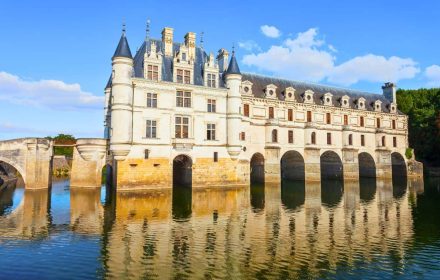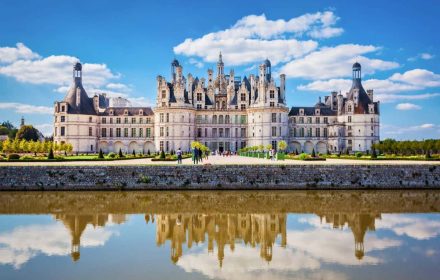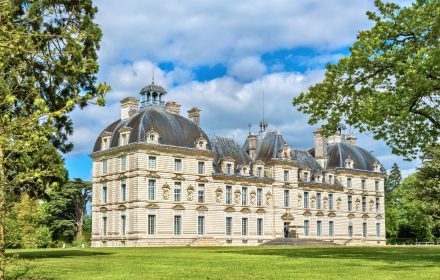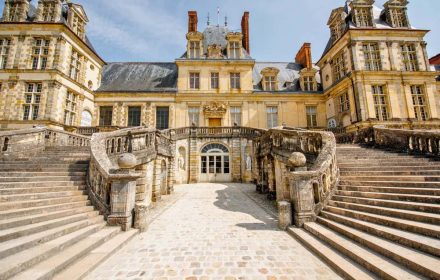This site uses affiliate links, meaning that if you make a purchase through our links, we may earn an affiliate commission.
If you’re exploring the Loire Valley, a stop at Château d’Amboise is an absolute must.
Perched above the town with sweeping views of the river, this castle is packed with royal history, Renaissance beauty, and even a connection to Leonardo da Vinci.
In this guide, I’ll walk you through what to see at Château d’Amboise and offer a few practical tips to help you enjoy your visit without crowds or confusion. Let’s dive in.
- 1. Brief History of Château d'Amboise
- 2. What to See at Château d'Amboise
-
- 2.1. The Architecture of Château d'Amboise
- 2.2. The Great Hall
- 2.3. The Pillar Room (Noble Guards' Room)
- 2.4. The Room of the Drummers
- 2.5. The King’s Room (Henry II Room)
- 2.6. The Orléans Room
- 2.7. The Music Room
- 2.8. The Minimes Tower
- 2.9. The Heurtault Tower
- 2.10. The Gardens
- 3. Practical Tips for Visiting Château d'Amboise
Brief History of Château d'Amboise
Château d’Amboise has watched the Loire River for over a thousand years, beginning its life not as a royal retreat, but as a fortress built for protection.
For generations, it was in the hands of the powerful Amboise family—until politics got in the way. In 1434, King Charles VII took control of the château after Louis d’Amboise was caught plotting against Georges de La Trémoille, a favorite advisor of the king. Although Louis avoided execution, the punishment was steep: his ancestral home was taken and became property of the crown.
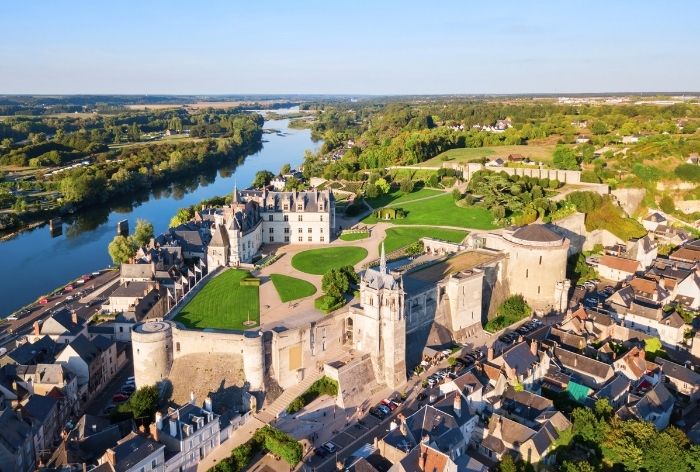
Château d’Amboise
A few decades later, Charles VII’s son, King Charles VIII, gave the château a dramatic new life. He grew up at Amboise and turned it into a royal residence that matched his vision of modern France. After returning from a campaign in Italy, Charles brought back Renaissance artists and architects who helped reimagine the château with sweeping staircases, ornate details, and new gardens. It became one of the first buildings in France to show off Italian Renaissance style. Tragically, in 1498, Charles died at Amboise—he hit his head on a low stone doorway and died shortly after.
In the early 1500s, Amboise reached its peak under King François I, who had spent much of his childhood there. As king, he invited Leonardo da Vinci to live nearby at Clos Lucé. The two were close, and Leonardo spent his final years working on projects for the king. He died in 1519, and today, he’s believed to be buried in the château’s chapel—adding a quiet but powerful link between Amboise and one of history’s greatest minds.
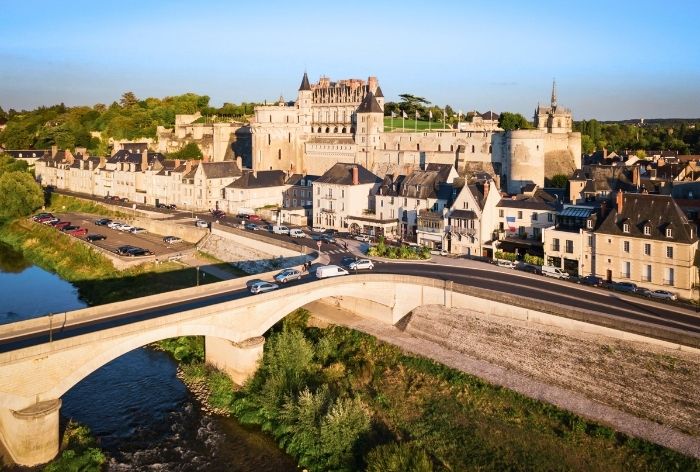
Château d’Amboise
By the mid-1500s, the château’s story took a darker turn. In 1560, it became the center of the Amboise Conspiracy, when a group of Protestants tried to kidnap the young king, Francis II, during the French Wars of Religion. The plot failed, and the reprisals were brutal—hundreds were executed in the château’s courtyard as a warning to others.
After that, the royal family began spending less time at Amboise. By the 17th and 18th centuries, it had largely been forgotten, and some parts of the building were dismantled or left to decay. The French Revolution brought more damage, as the château, like many royal properties, became a target during the upheaval.
In the 19th century, King Louis-Philippe, whose mother had once lived at Amboise, took on the task of restoring it. His work helped preserve much of what still stands today and gave the château a second life as a piece of national history rather than a forgotten ruin.
What to See at Château d'Amboise
The Architecture of Château d'Amboise
From the moment you arrive, the Château d’Amboise makes a strong impression. Built high above the Loire River, it was designed to be both a fortress and a symbol of royal power. Its architecture reflects that dual purpose: defensive strength on one side, refined elegance on the other.
The oldest parts of the château date back to the 13th century, when it was a fortified stronghold. You can still see these medieval features in the thick ramparts, the massive round towers, and the narrow arrow slits once used by archers. The location itself was carefully chosen: high ground for visibility and defense, with direct access to the river for transport and supply.
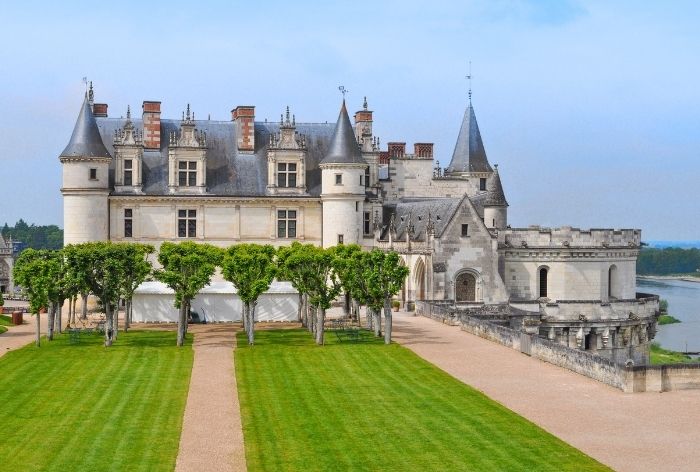
Château d’Amboise
Everything changed in the late 15th century when King Charles VIII returned from Italy and decided to modernize the château in the new Renaissance style.
He brought in Italian stonemasons and artists, and the result was one of the first examples of Renaissance architecture in France. Look for the rounded arches, classical pilasters, and ornamental stonework on the upper levels.
One of the château’s most fascinating architectural elements is the Tour des Minimes, a huge spiral tower that hides a sloped ramp wide enough for horses and carriages to ascend. This was cutting-edge engineering for the 15th century, combining elegance with practicality.
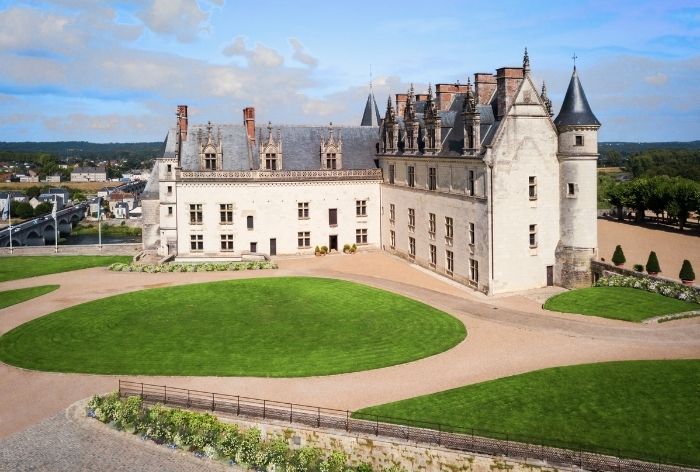
Château d’Amboise
A second, similar ramp, Tour Heurtault, was added shortly after. Both ramps allowed for smooth movement between the lower terrace and the royal apartments above without the use of stairs.
The chapel of Saint-Hubert, perched just outside the main body of the château, is another architectural highlight. Built between 1491 and 1496 in flamboyant Gothic style, it features intricate carvings of animals, foliage, and religious scenes.
Above the entrance, you’ll find a beautifully sculpted tympanum showing Saint Hubert’s vision of a crucifix between a stag’s antlers.
The chapel is small but rich in detail, and it holds what is believed to be the tomb of Leonardo da Vinci, who died nearby in 1519.
Also worth noting are the balconies and viewing terraces that offer panoramic views of the Loire Valley. They were designed to impress guests and foreign dignitaries, showing off the power and taste of the French monarchy.
The Great Hall
The Great Hall at Château d’Amboise served as the main ceremonial space for royal functions in the late 15th and early 16th centuries. Built during the reign of Charles VIII and modified under Louis XII and Francis I, it reflects a transition between Gothic and early Renaissance architectural styles.
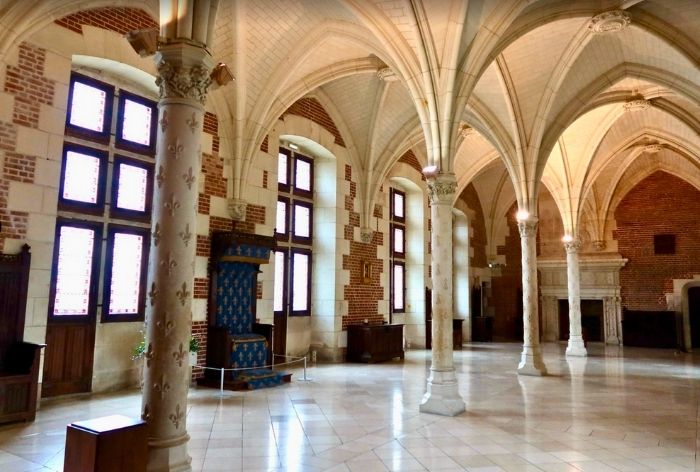
The Great Hall / What to See at Château d’Amboise
The hall features impressive ribbed vaults supported by sculpted stone columns.
There are two large fireplaces: one designed in the Gothic style, with pointed arches and intricate stonework, and another in the Renaissance style, marked by classical lines and more restrained ornamentation. Both were used to heat the vast space.
Furnishings inside the hall include wooden benches, storage chests, and tall, high-backed chairs known as chayères, typically reserved for members of the royal court and clergy.
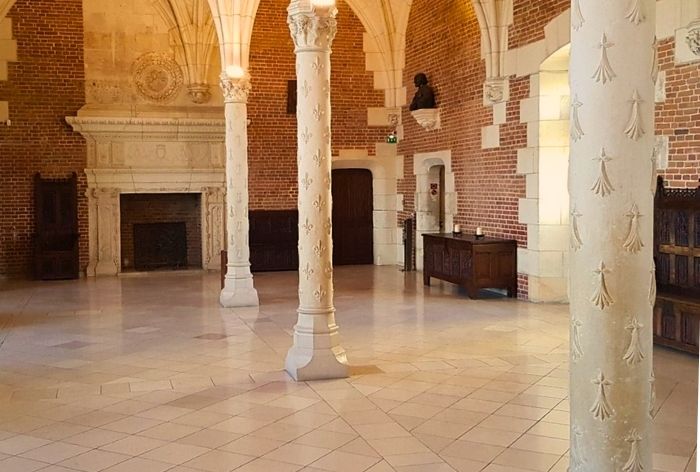
The Great Hall / What to See at Château d’Amboise
The Pillar Room (Noble Guards' Room)
The Pillar Room, or Salle des Gardes (Guards’ Room), is located beneath the royal apartments at Château d’Amboise.
One of the room’s most striking features is the “Gothic palm tree” design, where the ribs of the vaulted ceiling converge at a single column in the center. This intricate design visually connects all the vaults, creating a dramatic effect and highlighting the skill of the medieval craftsmen who built it.
Historically, the Pillar Room was used by the king’s guards, who were tasked with securing the royal apartments above.
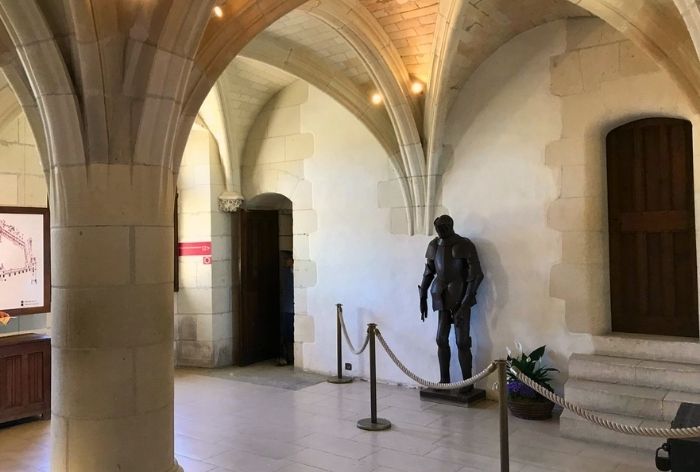
Pillar Room / What to See at Château d’Amboise
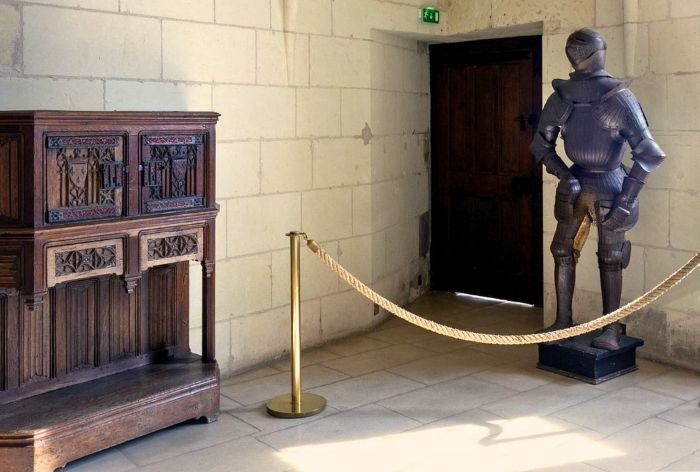
Pillar Room / What to See at Château d’Amboise
The Room of the Drummers
The Room of the Drummers (Salle des Tambourineurs) might evoke thoughts of music or battle. In fact, it was originally used as a royal dressing room or chambre à parer during the reign of the French monarchy.
The room itself is a beautiful example of Gothic architecture. The flooring is laid with fleur-de-lis-patterned terracotta tiles, a nod to the royal symbolism of the period, adding a touch of elegance beneath your feet.
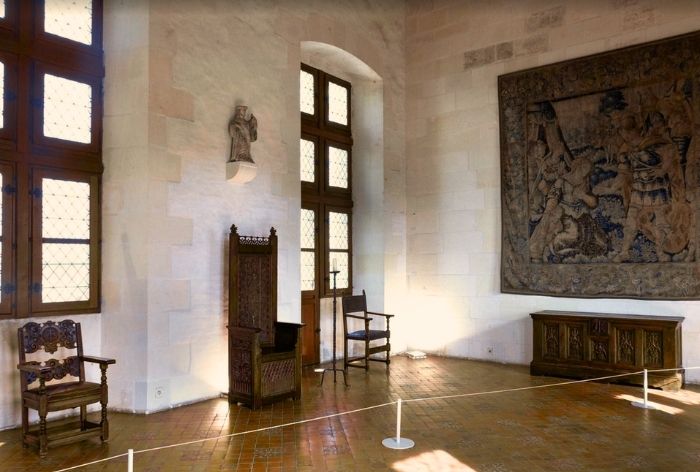
The Room of the Drummers / What to See at Château d’Amboise
The walls are adorned with a Flemish tapestry depicting the Homage of the Family of Darius to Alexander the Great, and portraits of King Charles VIII and Queen Anne of Brittany, reflecting the political and cultural context of the time.
The King’s Room (Henry II Room)
The King’s Room, often referred to as the Henry II Room, offers a close-up look at royal life during the French Renaissance.
At the center of the room is a striking four-poster bed, unusually large for its time. Measuring about 2.18 by 1.82 meters, it was built to fit Henry II himself, who stood around 1.84 meters tall, well above average in the 16th century.
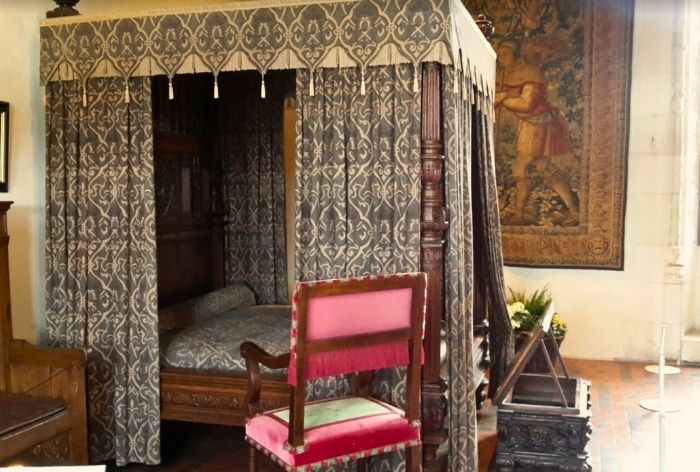
The King’s Room / What to See at Château d’Amboise
Around the room, you’ll find Renaissance-era tapestries illustrating scenes from classical mythology. These served more than just a decorative purpose, they also helped insulate the space.
One artwork that might catch your attention is a painting from 1781. It imagines Leonardo da Vinci dying in the arms of King Francis I, a romanticized scene that’s become part of the château’s legend. While moving, the story isn’t backed by historical evidence. Leonardo did die nearby in Amboise, but Francis wasn’t present at his bedside.
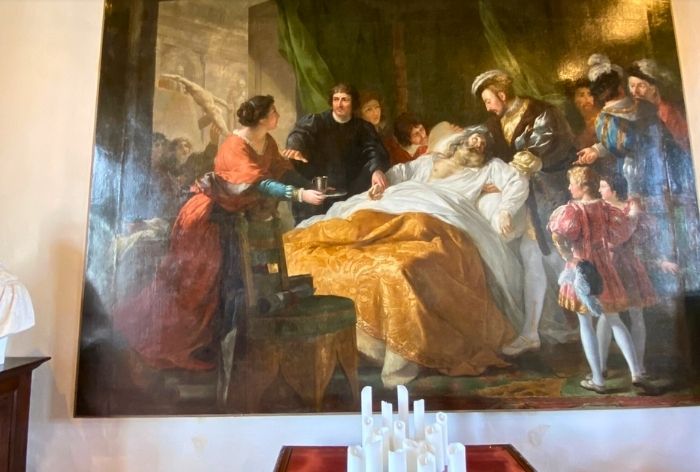
Painting of Leonardo da Vinci / What to See at Château d’Amboise
The Orléans Room
The Orléans Room brings you into the 19th century, when King Louis-Philippe, the last king to rule France, restored parts of the château as a royal residence for his family.
One of the first things you’ll notice is the boat-shaped bed, a hallmark of the Louis-Philippe style.
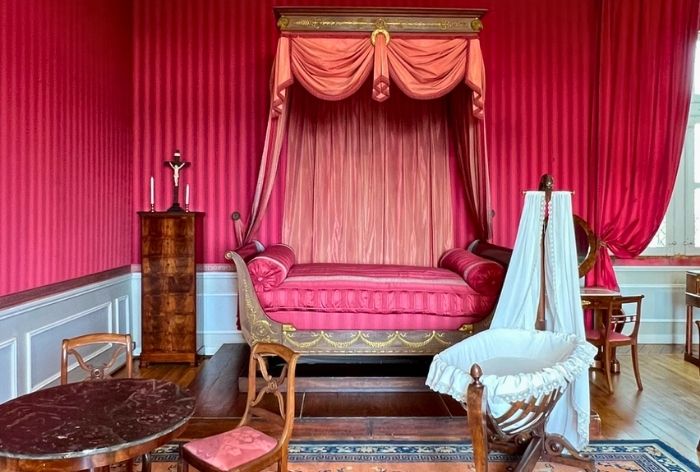
The Orléans Room / What to See at Chateau d’Amboise
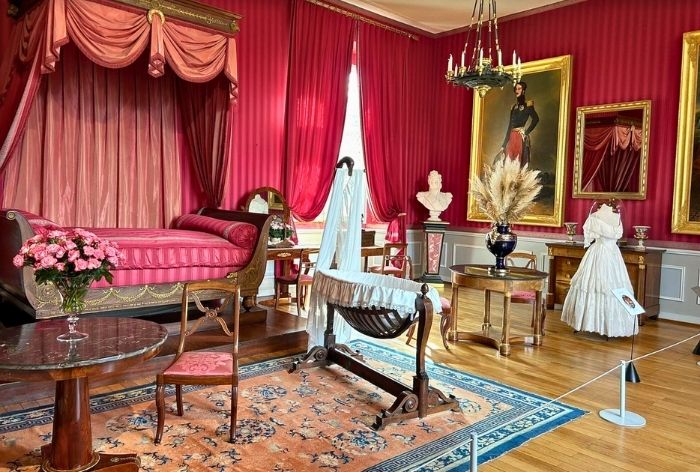
The Orléans Room / What to See at Chateau d’Amboise
But what stands out is the recreated 19th-century dress, made in 2022 and based on an 1839 painting. It took 360 hours to complete and is one of the highlights of the room.
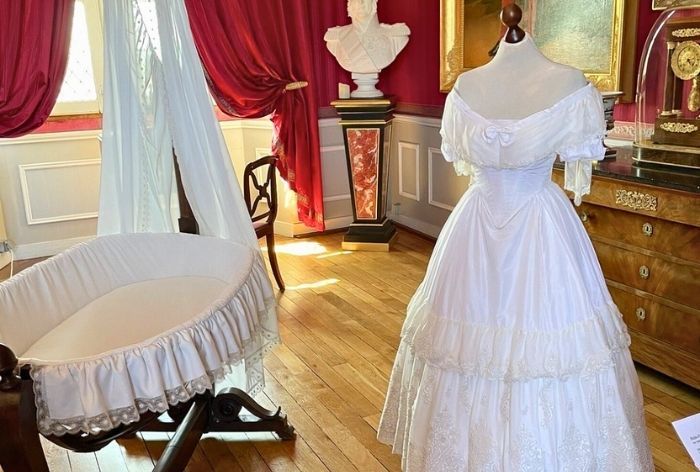
The Orléans Room / What to See at Chateau d’Amboise
The portraits on the walls, including those of Louis-Philippe’s family members, add a personal layer to the room.
The Music Room
The Music Room is part of the château’s 19th-century revival under King Louis-Philippe I.
The room holds a collection of instruments, most notably a beautifully preserved Érard grand piano, made by the renowned French piano maker of the same name. Crafted from Rio rosewood, the instrument is a work of art in itself—elegant, rich in tone, and once favored by the top musicians of its time.
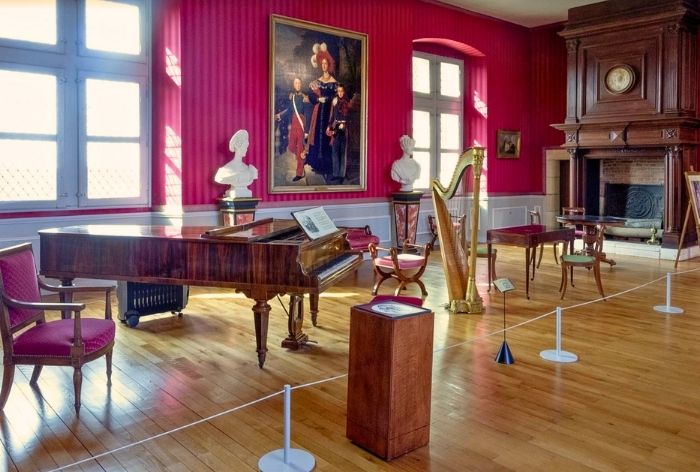
The Music Room / What to See at Château d’Amboise
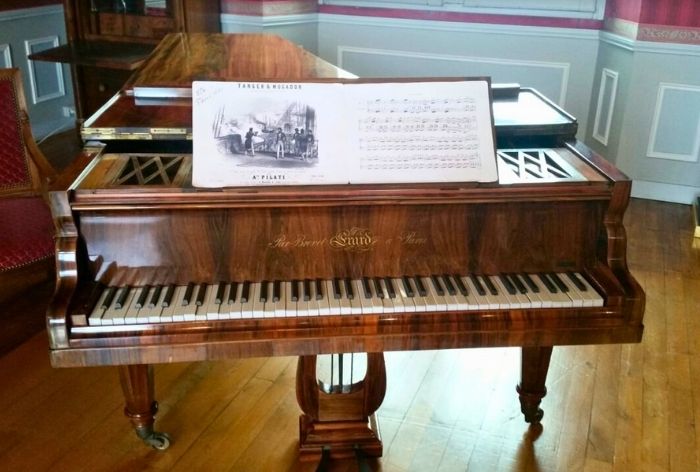
The Music Room / What to See at Château d’Amboise
The furnishings include a Restoration-style secrétaire, a carved console, and a fine mahogany chair stamped by Jacob, one of the premier furniture craftsmen of the era.
Notice the portraits on the walls, including an image of Emir Abd El-Kader. An Algerian leader and scholar, he lived in exile at Amboise from 1848 to 1852.
Other portraits include members of the royal family: Queen Marie-Amélie, her sons the Duke of Aumale and Duke of Montpensier, and Philippe Égalité, Louis-Philippe’s father.
The Minimes Tower
Built between 1495 and 1498 under King Charles VIII, the Minimes Tower was designed to impress and to solve a very practical problem. With its wide, gently spiraling ramp, this tower allowed horses and carriages to ascend directly from the base of the town up to the château’s main terrace.
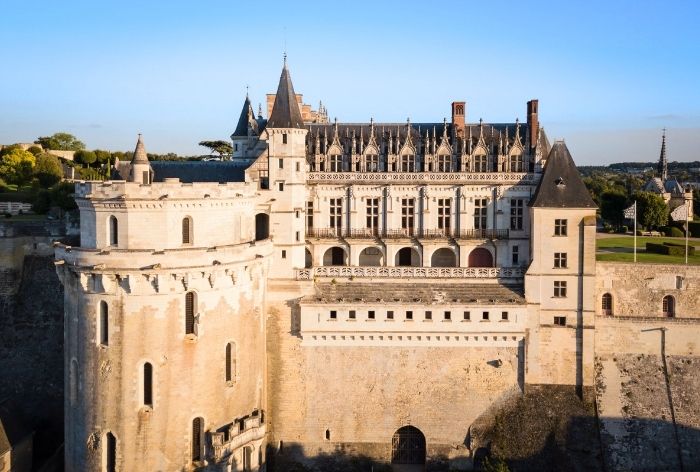
The Minimes Tower / What to See at Château d’Amboise
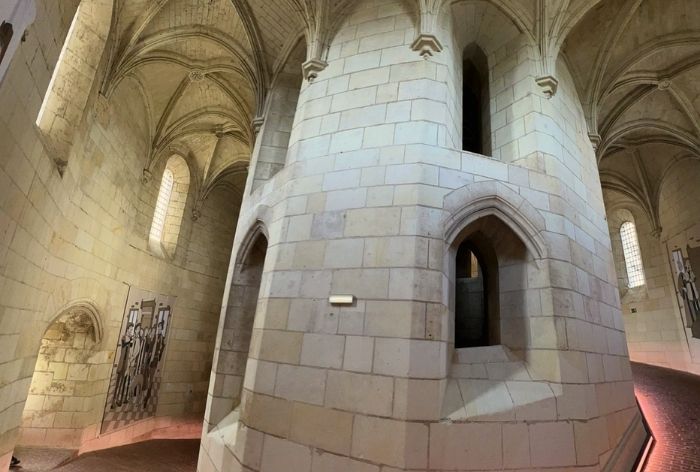
Inside the Minimes Tower / What to See at Château d’Amboise
Before you leave, don’t miss the terrace at the top. It offers a stunning 360-degree view of Amboise, the Loire River, and the gentle sweep of the surrounding countryside.
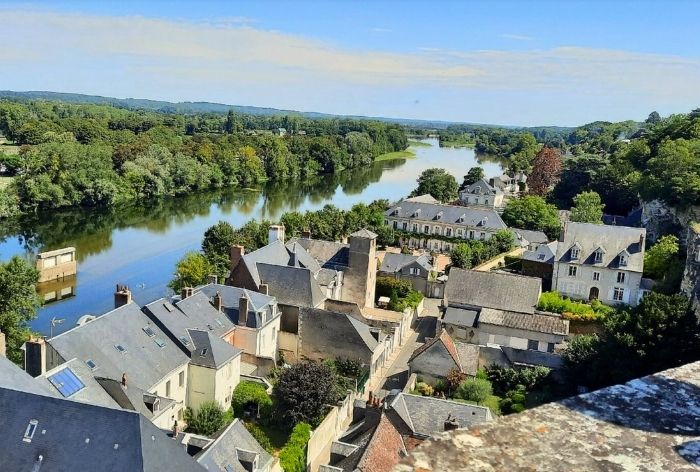
View from the Mimimes Tower / What to See at Château d’Amboise
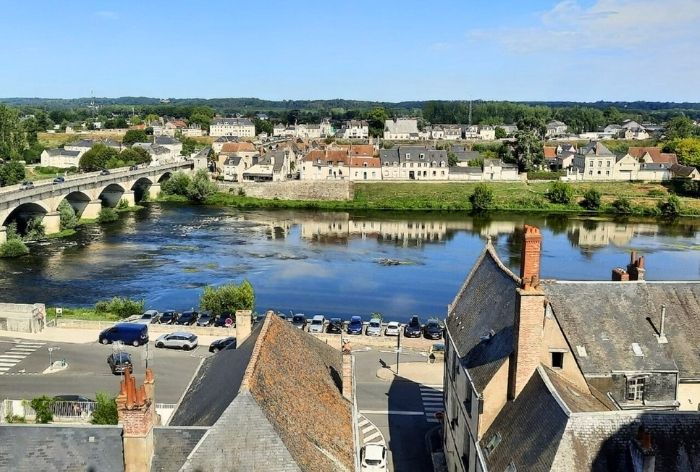
View from the Mimimes Tower / What to See at Château d’Amboise
The Heurtault Tower
Just like the Minimes Tower, the Heurtault Tower features a gently sloping spiral ramp, designed to let horses and carriages access the château from the lower town without dismounting.
What sets the Heurtault Tower apart is its position at the eastern end of the château. Historically, it served as a main entrance for goods and guests arriving from the town.
Step outside, and you’ll be rewarded with a panoramic view from the upper terraces near the tower.
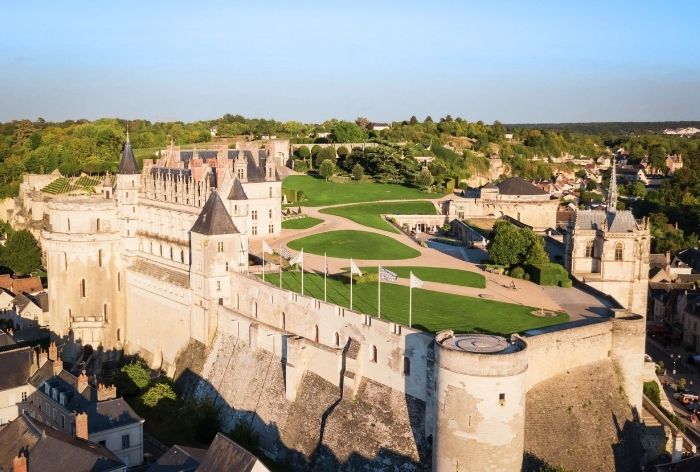
Château d’Amboise / What to See at Château d’Amboise
The Gardens
The gardens at Château d’Amboise are more than just beautiful, they’re historic.
They mark the beginning of Renaissance landscaping in France, thanks to King Charles VIII, who brought in Italian designer Pacello da Mercogliano in the late 1400s.
Pacello’s approach was revolutionary at the time: instead of keeping gardens tucked away behind walls, he opened them up to frame the natural landscape, turning the view into part of the experience.
One of the most striking spaces is the Naples Terrace. It’s designed to guide your eye outward, with stone belvederes perfectly placed to overlook the Loire River and the rooftops of Amboise.
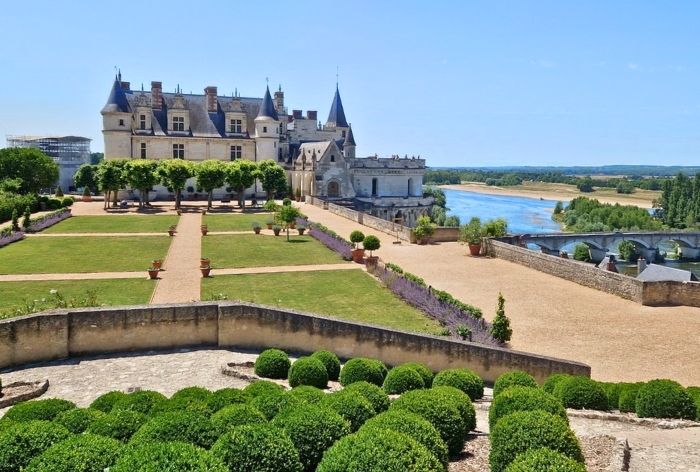
The Naples Terrace / What to See at Château d’Amboise
There’s also a quiet, powerful space called the Oriental Garden, added in 2005. It honors Emir Abd El-Kader and the dozens of Algerians exiled here in the 19th century. Designed by artist Rachid Koraïchi, it’s filled with symbolism—an alley aligned toward Mecca, geometric patterns, and stone markers that serve as a tribute to those who lived and died here far from home.
Practical Tips for Visiting Château d'Amboise
Getting to Château d'Amboise
Château d’Amboise is located right in the center of the town of Amboise. It’s easy to reach by car or train.
If you’re driving from Paris, take the A10 motorway and exit at Tours Centre (Exit 21), then follow signs east toward Amboise. From Tours, it’s a straightforward 30-minute drive along the D751 or the N152, following the river.
Trains from Paris stop at Tours, and from there, you can catch a local TER train to Amboise. The town’s station is about a 15-minute walk from the château, and the walk takes you through the old streets and toward the river.
There’s no private parking at the château itself, but you’ll find several public lots within easy walking distance.
Parking des Quais is the closest, located just across the road from the château entrance along the riverfront. It’s a paid lot and tends to fill up quickly, especially in the high season.
A few minutes farther away, Parking des Tanneurs offers free parking and is usually a good option if the main lot is full.
Tickets and Opening Times
Château d’Amboise is open year-round, but the hours slightly change with the seasons. It’s always closed on January 1st and December 25th.
You can buy tickets directly at the château or online in advance, which can be a good idea during busy travel months. Admission includes access to the château, the gardens, and a self-guided tour with a tablet (called a Histopad) that walks you through the history room by room.
There are discounts for students, children, and other eligible visitors, and kids under seven get in for free.
For current ticket prices, opening times, and any updates before your visit, check the official website: www.chateau-amboise.com.
Where to Eat at Château d'Amboise
If you’re looking for something quick and casual, Bigot is just steps from the château. It’s a local favorite for pastries, sandwiches, and coffee. You can grab a quiche or a croque-monsieur and enjoy it on their small terrace or take it to go and picnic by the river.
For a longer, more relaxed meal, L’Épicerie is a great choice tucked in a quiet side street nearby. It’s cozy, with local wines and classic French dishes like duck confit and goat cheese salad.
How Much Time Is Needed
Give yourself about 2 hours exploring the château and its grounds. If you’re like me and like to read every panel or take your time in the gardens, then add another hour.
The Histopad self-guided tour helps set a comfortable pace, and there’s no rush once you’re inside. Add in time for photos, the panoramic views, and maybe a stop at the gift shop or café, and you’ve got a half-day well spent.
Here Are Some More Ideas of Places to Visit in France:
How to Visit Fontainebleau on a Day Trip from Paris (13 Best Things You Can’t Miss)
What to See at Château de Villandry (13 Things You Can’t Miss + Practical Tips)
13 Tips for First Visit to Rouen to Help You Explore the City
DIY Walking Tour of Rouen (17 Best Stops, Map and Tips)
What to See at Château de Chaumont-sur-Loire (12 Things You Can’t Miss + Useful Tips)
What to See at Château d’Azay-le-Rideau (12 Things You Can’t Miss + Practical Tips for Your Visit)
How to Spend 6 Days in the Loire Valley (Detailed Itinerary + Practical Travel Tips)
7 Must-See Châteaux in the Loire Valley for First-Time Visitors (What to See + Practical Tips)
Perfect One Day in Étretat (5 Top Things You Can’t Miss + Practical Tips)
Did You Find It Useful? Why Not Save What to See at Château d'Amboise to Pinterest!


Now, It Is Your Turn, I Would Like to Hear Back from You!
Are you planning your trip to France?
Please let me know! Drop me a quick comment right below!
Click on any of the images below to get inspired and to help you with the planning process for your trip to France!
